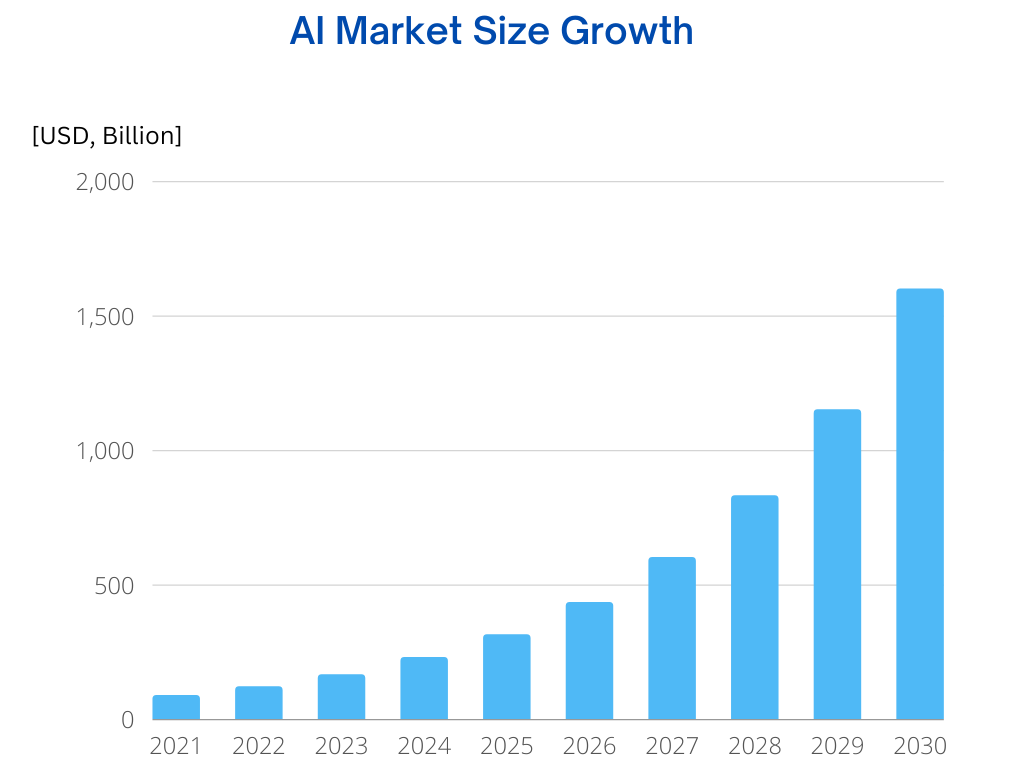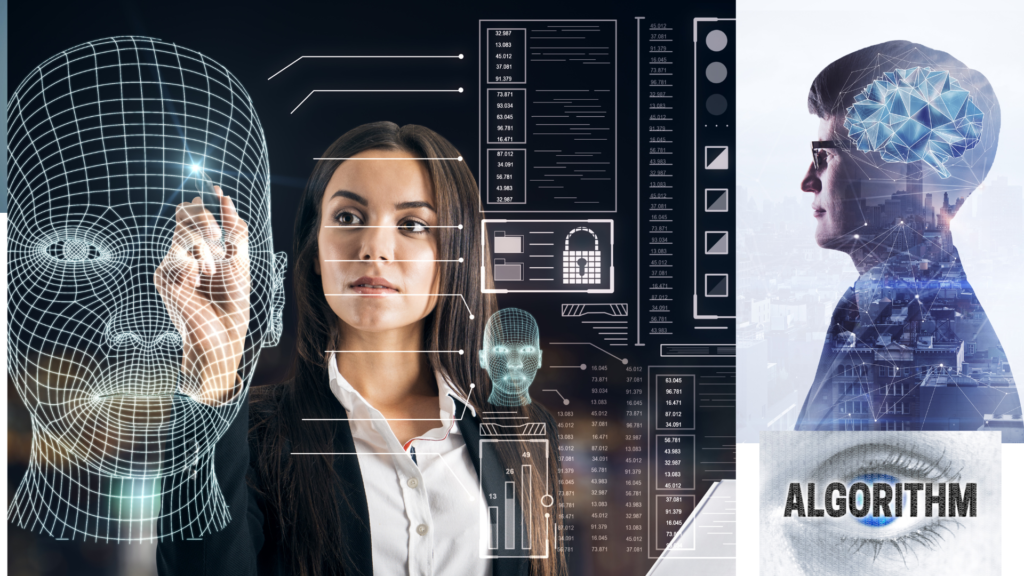Introduction to AI
Ever since Alan Turing proposed the Turing test in 1950, artificial intelligence (AI) has been a hot topic in both academic and popular circles. There are many reasons why you might want to build your own AI. Maybe you want to create a digital assistant to help you with your work. Maybe you just want to create something for fun. Or maybe you mean you want to build a robot that can vacuum your floors or do your laundry.
Whatever your reasons, there are a few things you should know before you start building your own AI. AI does not necessarily mean building a robot that looks and acts like a human. That’s called artificial general intelligence, and it’s a much harder problem to solve. Instead, most AIs are designed to do one specific task, like playing chess or driving a car.
Study AI to Know What You’re Getting Into

You don’t need to be a genius to build an AI. You just need to be willing to put in the time to study and learn. There are many resources available to help you, including books, online courses, and community forums. For example, if you want to build a digital assistant, you might want to start by taking a natural language processing course. Sometimes the hardest part of building an AI is understanding all the different concepts and terms.
Here are some basic AI-related terms:
- Algorithm: A set of instructions for a computer to follow.
- Data: Information that can be used by an AI.
- Machine learning: A method of teaching computers to learn from data.
- Neural network: A machine learning model that is inspired by the structure of the brain.
- Deep learning: It is a subset of machine learning that is based on artificial neural networks.
- Natural Language Processing: A branch of AI that deals with understanding human language.
- Structured data: Structured data is data that is already organized and formatted.
- Unstructured data: Data that is not organized in a predictable way, like image, audio, and video data.
- Programming language: A language that is used to write computer programs. Python, Java, C++, and Lisp are all popular programming languages for AI.
- Hyperparameters: These are the settings that you can change to improve the performance of your model.
There are Benefits to Building an AI
AI is expected to lead toward a global GDP growth of 16 percent by 2030. So, it’s clear that the future of competition is going to be about building better AI to do tasks, rather than doing tasks in a better way.

Looking at this future chart with AI makes it not only beneficial but necessary, to learn how to build AI. Here are some of the benefits I’m talking about:
a. Automation
AIs can automate tasks that would otherwise require human attention. For example, you can train an AI to play a game for you or to filter your email. Furthermore, people have managed to build AI bots to make passive earnings in the stock markets. For example, you can invest $1000 in the stock market, build an AI algorithm, and automate the growth over time. Annualized, this could even return figures like 30-40% per year.
b. Data-driven insights
AIs can help you make better decisions by providing data-driven insights. For example, you can use AI to analyze data from social media to find out what people are saying about your product. AIs can make sense of unseen data and find hidden patterns in them to predict further.
c. Explore your limits
Maybe you want to build an AI because you want to explore the limits of your own intelligence. And it is a pretty valid reason, too. For instance, if you want to know how good you are at poker, you can build an AI that will play against you. Same if you want to know how good you are at Go. It’s quite good research to test the limits of your artificial creation.
d. Fun and creativity
Building an AI can be a fun and creative experience. It’s a chance to flex your mental muscles and show off your creativity. And if you’re building an AI for fun, then the sky’s the limit. You can let your imagination run wild.
Weigh the Challenges of AI Construction

Building an AI presents a unique set of challenges. From general to technical, to ethical, the challenges must be carefully considered before taking the plunge into AI development. Guesswork and trial-and-error simply won’t suffice – a well-thought-out plan is essential for success.
Technical Challenges
Here are some of the technical challenges you might face when building an AI:
a. Finding the right data
AIs need data to learn. And not all data is created equal. Some data is more useful than others. For example, if you’re training an AI to play chess, you’ll need data about chess games. But if you’re training an AI to drive a car, you’ll need data about driving. AIs learn by example, so the more data you have, the better. It means that you need to collect a vast amount of data to build a good Artificial Intelligence system.
b. Cleaning the data
Data is often messy. It can be incomplete, inconsistent, or simply wrong. And this can make it hard for an AI to learn. For example, if you’re training an AI to drive a car, you’ll need data about driving. But if that data is full of errors, the AI might make mistakes. That’s why you have to clean your data before you use it to train an AI.
c. Building the right model
AIs are powered by machine learning algorithms. And there are many different types of machine learning algorithms. Each type of algorithm is better suited for certain tasks. Again, if you’re training an AI to play chess, you’ll need a different algorithm than if you’re training an AI to drive a car. Furthermore, different algorithms require different types of data. So, it’s challenging to choose the right algorithm for your task and data.
d. Debugging
Even if you do everything right, things can still go wrong. AIs are complex systems, and it’s often hard to understand why they make the decisions they do. When something goes wrong, it can be difficult to figure out what the problem is. And this can be frustrating.
General Challenges
Now, let’s talk about some general challenges:
a. It can be expensive
Building an AI can be expensive. You’ll need to buy hardware, like a computer or a robot. And you’ll need to buy software, like machine learning algorithms. Furthermore, you’ll need to pay for data. And if you’re hiring someone to help you, you’ll need to pay their salary.
b. It can take a long time
It can take months or even years to train an AI. And it can take even longer to get an AI to work the way you want it to.
c. You might not be able to do it alone
You might need to hire experts to help you. For example, you might need to hire a data scientist to help you clean your data. Or, you might need to hire a machine learning engineer to help you choose the right algorithm. Furthermore, you might need to pay for data. More the data, the more the bank-breaking.
Ethical Challenges
The ethical challenges of AI are even more complex. As AI gets better at understanding and responding to the world, the potential for misuse increases. For example, facial recognition technology can be used for good, such as helping to reunite families with lost loved ones. But it can also be used for evil, such as tracking down political dissidents. As AI gets better at making decisions, the potential for biased or unfair decision-making increases. For example, an AI system that is designed to screen job applicants may inadvertently discriminate against women or minorities.
According to a survey, 58% of Americans believe that computer programs will always reflect the biases of their designers. This shows that nearly 6 out of 10 people think that it is not possible for computer programs to make decisions that are free from human bias. When it comes to AI ethics, people should be careful about what they build because it might lead to racial, gender, or other types of discrimination.
Use These Steps to Build an AI

Building an AI, especially as a beginner, can feel like an insurmountable task. However, by following some simple steps and breaking the process down into manageable chunks, it is possible to create a working AI. Before we begin, do understand that the world of AI is constantly changing, so it is important to stay up-to-date with the latest advancements. Like, it has been more than 6 years, since Google’s DeepMind announced that their AI system, AlphaGo, had defeated the world’s top Go player. It was a great achievement for mankind overall. But do you want to work for years to create the same thing, or something similar? Of course, not. Rather, you want to analyze past information and accomplishments to create something that is even better and works for your specific needs. Here are the steps to build your own AI:
1. Choose a focus area:
The first step is to choose a focus area. You may want to focus on a specific industry, such as healthcare or finance, or on a specific type of AI, such as machine learning or natural language processing. Choose a focus area – No, you can not keep drawing an abstract AI and hope to make nice-looking art out of it. It simply does not work like that. You will need to pick a focus area to work on. Do you want to work on facial recognition, text recognition, image recognition, or video analysis? Building an AI may or may not be your end goal, but if you’re in, you will need to choose a focus area. There is simply no good alternative to it.
2. Collect and label data
Data is the fuel that powers AI. Without data, you will not be able to train your model or even evaluate it. So, the next step is to collect data. This data can be collected in various ways, such as through online sources, or maybe even surveys. If you want to collect data via online sources, you will need to make sure to filter out the wrong information. Surveys are another great way to collect data, but they can be time-consuming. And, lastly, you will need to label this data. This is so that your model knows what it is looking at when it is training. For example, if you are working on facial recognition, you will need to label the data with things like “eyes”, “nose”, “mouth”, etc.
Here are the different types of data:
A. Unstructured data
Unstructured data can be collected from social media platforms, blogs, articles, and so on. People often use web scraping techniques like BeautifulSoup to collect this data.
a. Text data – This data can be used to train your model for Sentiment Analysis, Text Classification, and more.
b. Image data – It is used to train your model for tasks such as Object Detection and Image Classification. DALL E2, created by OpenAI, is an example of how you can use image data to build image-generating AI.
c. Audio data – It can be used to train your model for tasks such as Speech Recognition and Sound Classification.
B. Structured data
On the other hand, structured data is data that is already organized and formatted. You can usually find this type of data in databases.
a. Relational databases – These are databases where data is organized into tables. Examples of relational databases are MySQL, Oracle, and Microsoft SQL Server.
b. NoSQL databases – These are databases where data is not organized into tables. Examples of NoSQL databases are MongoDB, Cassandra, and BigTable.
c. Excel files – These are files where data is organized into rows and columns.
3. Choosing the right algorithm and training your model
You will decide which algorithm to use and which hyperparameters to tune. Once you have created your model, you will need to train it. You can do this by feeding your data into the model and letting it learn. The model will make predictions based on the data it has been given. You can then compare these predictions to the actual labels to see how accurate your model is. Training your model is an important part of building AI. The model needs to be able to learn from the data so that it can make accurate predictions.
There are many different ways to train your model. You can use a training set, which is a set of data that is used to train the model. The model is then tested on a test set, which is a set of data that is used to see how accurate the model is. You can also use cross-validation, which is a method of training the model on multiple sets of data. It allows the model to learn from more data and to be more accurate.
One way or the other, you want to choose an algorithm that is well-suited to the type of data you have and the task you are trying to accomplish. You also want to make sure that the algorithm is properly trained on a large and representative dataset.
If the data you collected is not enough to train your model, you may need to use a technique called transfer learning. This is where you use a pre-trained model and fine-tune it to your own data. This is a common technique used in image recognition, where models are often pre-trained on the ImageNet dataset.
4. Evaluate
After training your model, the next step is to evaluate it. This is done by making predictions on data that the model has not seen before. You can then compare these predictions to the actual labels to see how accurate your model is. The accuracy of your model will depend on the quality of your data. If your data is noisy or contains errors, your model will not be as accurate. You may also want to use a technique called cross-validation. This is where you split your data into multiple sets and train and test your model on each set. This will give you a more accurate idea of how well your model is performing.
A spam-detection agency can set up a “spam score” from 1 to 100 against each email. After a while, it will have a good idea of which emails are spam and which are not. Then, it can use this information to make a model that can predict the spam score of new emails. This model can be used to filter out spam emails before they reach the inbox of the user. If the spam score is 92, it is highly likely to be spam. If it is 55.8, nothing can be said about it. And if it is 2.73, it is most likely safe. If the ones it is detecting as spam are indeed spam, it is performing well, and vice versa.
In the process of building an AI model, evaluation is crucial not only to understand how good your model is but also to find ways to improve it. For example, you may find that your model is overfitting to the training data. This means that it is memorizing the training data and is not generalizing well to new data. To fix this, you may need to use a technique called regularization. This is where you add a penalty to the model if it overfits. This will make the model more likely to generalize well to new data.
5. Tune your model
After training and evaluating your model, you may want to tune it to get a better result. This is done by changing the hyperparameters of the model. For example, you may want to change the learning rate, the number of layers, or the number of neurons. You can also use a technique called grid search to find the best hyperparameter values. This is where you define a grid of values and then train and test your model on each value. The value that gives the best result is then used as the final value.
Tuning your model is an important step in the process of building an AI model. It can help you to improve the accuracy of your model and also play a key role to avoid overfitting.
6. Choose the right platform and programming language for you.
There are many different platforms and programming languages that you can use to build AI models.
Right platform:
You need to opt-in for the platform that provides you with the best combination of flexibility and control for your AI-building needs. Cloud frameworks like TensorFlow, AWS, and Azure give you the control to select the number of cores, the type of hardware, and the memory that you want to use. You also get to choose the language, the tools, and the libraries that you want to use.
On the other hand, if you want to use a platform that is more focused on deep learning, you can go for one of the many options that are available. These include Google’s DeepMind, Facebook’s PyTorch, Microsoft’s Cognitive Toolkit, and Amazon’s MXNet. The actual platform that you choose will depend on your specific needs.
Programming languages:
The two most popular programming languages for AI are Python and R. However, are others too, and there is no one-size-fits-all solution. You will need to choose the language that is right for you. This will depend on your data, your model, and your resources.
Right programming language for you:
a. C++: If you want complete control over your code and your resources, then C++ is the right language for you. It is a low-level language that gives you complete control over memory management and is closer to the hardware. However, it is a complex language and can be difficult to learn.
b. Java: Java is a versatile and powerful programming language that enables developers to create robust, high-performance applications. It is platform-independent, meaning that it can be run on any operating system or device. Programmers use it in a wide variety of applications, including web-based applications, mobile apps, desktop apps, and more.
c. Python: Python is a general-purpose programming language that is easy to learn and has many different libraries that you can use for AI. Also, it is one of the fastest-growing languages and is widely used in many different fields.
d. R: R is a programming language that is specifically designed for statistical analysis. It is widely used in the field of data science. It can also be helpful for certain tasks, such as time-series analysis. Statisticians and data miners widely use it for developing statistical software and data analysis.
e. MATLAB: MATLAB is a language that is specifically designed for mathematical and scientific computation. Its applications range from matrix operations, and the plotting of functions and data, to the implementation of algorithms, the creation of user interfaces, and interfacing with programs written in other languages.
f. Julia: Julia is a high-level, high-performance dynamic programming language for technical computing, with syntax that is familiar to users of other technical computing environments. It provides a sophisticated compiler, distributed parallel execution, numerical accuracy, and an extensive mathematical function library. It combines the ease of use of traditional interpreted languages with the performance of compiled languages.
Related Post: Artificial Intelligence (AI) Language Evolution & Reproduction
Keep track of performance
Now, deploy it so that people/you can use your model. There are many different ways to deploy your model. And yeah, there is a lot more to it than just “deploying your model”. Consistently monitoring your deployed model is important to track its performance and to ensure that it is working as intended. You may also want to use a technique called A/B testing. This is where you deploy two different versions of your model and compare their performance. This can help you to improve the accuracy of your model.
There is a limit to what computers can learn by example. They cannot, for instance, learn concepts such as “love” or “hate”. Nor can they learn to identify objects in pictures or videos unless they are given a lot of examples of these objects. This is where artificial intelligence comes in. You can not create awareness, but use algorithms to program consciousness in AI.
Conclusion
Now you have a better idea of what it takes to create your own AI, ask yourself a question: Can the AI do the same? You know, the end goal of building artificial intelligence is to build one that can do the same and continue its generations. Yes, that might be the purpose of your AI creation task, as we mentioned earlier. To build AI by yourself, it is important to understand how AI works, what data is required to train it, and what hardware is necessary to support it. The most difficult part is to get started, but once you do, it becomes much easier. Learn, collect, train, test, and ask the AI to do the same. It is a fun and self-rewarding process that requires understanding, patience, and time.
- AI-Powered PCs: Overhyped Trend or Emerging Reality? - August 21, 2024
- Princeton’s AI revolutionizes fusion reactor performance - August 7, 2024
- Large language models could revolutionize finance sector within two years - March 27, 2024



